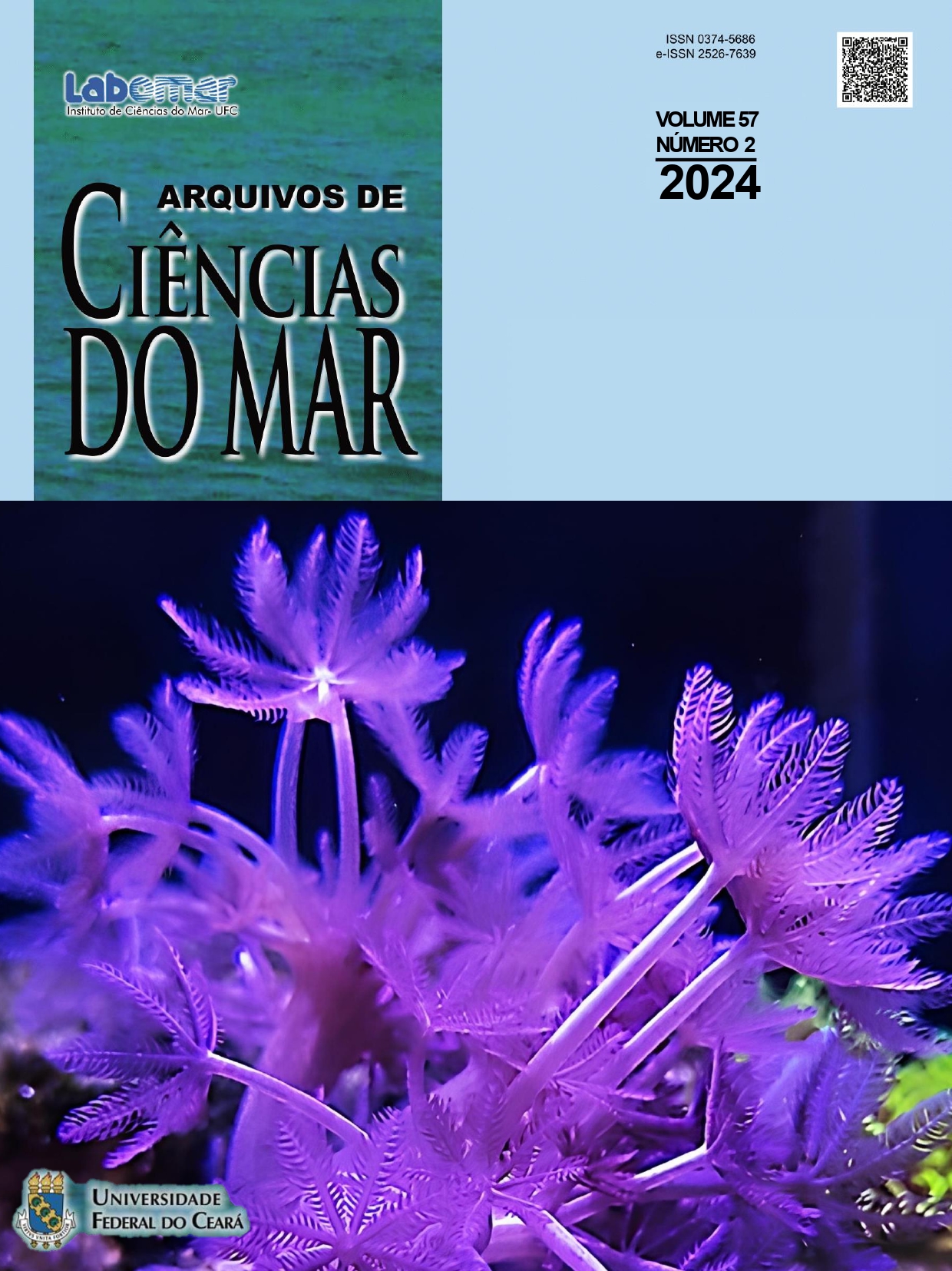POPULATION STUDY OF THE SEAHORSE Hippocampus reidi GINSBURG, 1933 (TELEOSTEI: SYNGNATHIDAE) IN TWO ESTUARIES OF NORTHEASTERN BRAZIL
Estudo populacional do cavalo-marinho Hippocampus reidi Ginsburg, 1933 (Teleostei: Syngnathidae) em dois estuários do nordeste do Brasil
DOI:
https://doi.org/10.32360/acmar.v57i2.91583Abstract
Seahorses, classified as bony fishes within the genus Hippocampus, possess biological characteristics that make them particularly susceptible to overexploitation. Intense commercial demand, coupled with habitat degradation, has contributed significantly to population declines. Given the global threats faced by these organisms and their status as a “flagship species,” ecological studies focused on seahorses are of critical importance. This study aimed to assess the spatial and temporal distribution of Hippocampus reidi abundance in the Pacoti and Malcozinhado Rivers, as well as to document other ecological characteristics of the species. Transects covering an area of 100 m² were established along the riverbanks, with each river divided into two sampling stations at increasing distances from the sea. The mean density of H. reidi was 0.008 individuals/m². The Pacoti River exhibited significantly higher mean densities compared to the Malcozinhado River (p = 0.019). No significant differences in density were observed between the two stations within the Pacoti River, whereas a marked difference was noted between stations in the Malcozinhado River. Although both rivers exhibited a decreasing trend in densities over the study period (Periods 1 and 2), statistical testing of these trends was not conducted due to the lack of standardization in data collection methods between the two periods. No seasonal variation in abundance was detected. The seahorses in the Pacoti River were significantly larger than those from the Malcozinhado River (p = 0.027). The sex ratio was 1:1, but males exhibited a greater mean size than females (p = 0.013). Black and brown color morphs were more prevalentthan other colorations. Additionally, seahorses showed a preference for anchoring to the roots of Laguncularia racemosa as holdfast structures. This study highlights that environmental variations between estuaries—such as the extent of mangrove coverage, discharge volumes, and susceptibility to anthropogenic impacts—can influence the abundance and ecological patterns of H. reidi. Effective conservation and management of this threatened species will depend on a comprehensive understanding of its ecological requirements and responses to environmental factors.
Keywords: Population structure, bioecology, habitat conservation
Downloads
Published
Issue
Section
License
Copyright (c) 2024 Arquivos de Ciências do Mar

This work is licensed under a Creative Commons Attribution 4.0 International License.
1. Proposta de Política para Periódicos de Acesso Livre
Autores que publicam nesta revista concordam com os seguintes termos:
- Autores mantém os direitos autorais e concedem à revista o direito de primeira publicação, com o trabalho simultaneamente licenciado sob a Licença Creative Commons Attribution que permite o compartilhamento do trabalho com reconhecimento da autoria e publicação inicial nesta revista.
- Autores têm autorização para assumir contratos adicionais separadamente, para distribuição não-exclusiva da versão do trabalho publicada nesta revista (ex.: publicar em repositório institucional ou como capítulo de livro), com reconhecimento de autoria e publicação inicial nesta revista.
- Autores têm permissão e são estimulados a publicar e distribuir seu trabalho online (ex.: em repositórios institucionais ou na sua página pessoal) a qualquer ponto antes ou durante o processo editorial, já que isso pode gerar alterações produtivas, bem como aumentar o impacto e a citação do trabalho publicado (Veja O Efeito do Acesso Livre).

